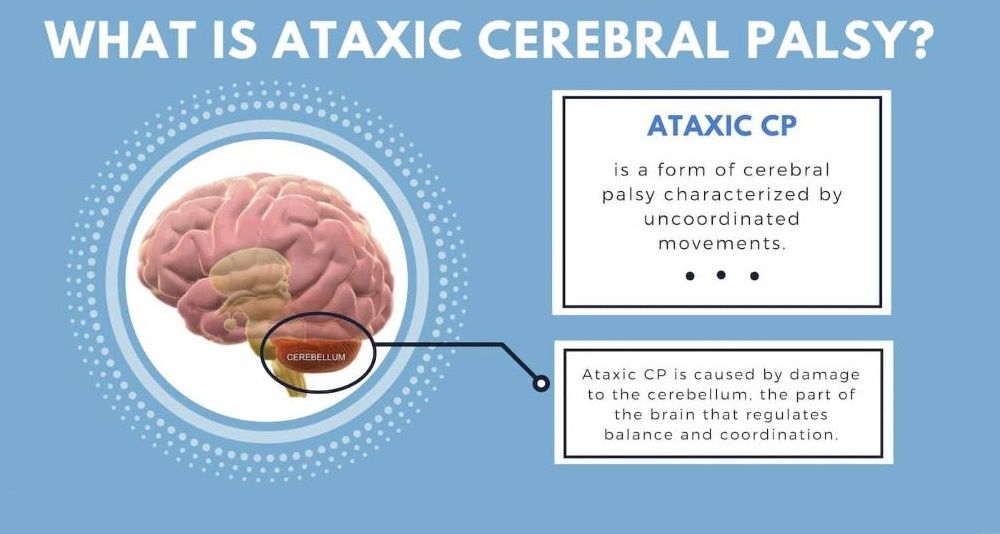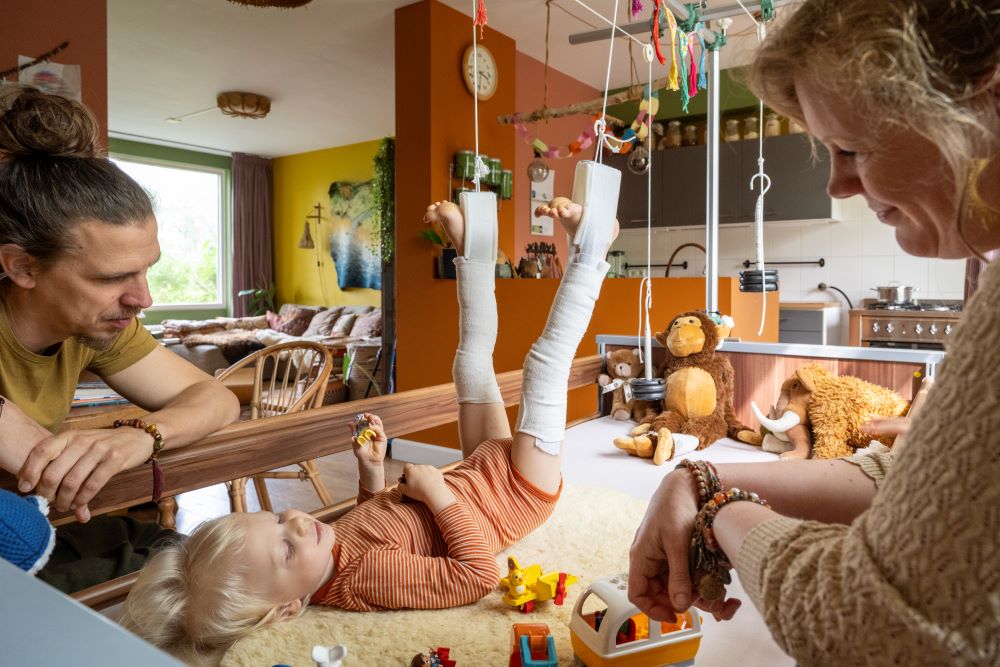Last Updated on December 1, 2024 by Michelle Wan
Ataxic cerebral palsy (CP) is a less common but significant type of cerebral palsy that affects coordination, balance, and fine motor skills. This condition occurs due to damage to the cerebellum, the part of the brain responsible for controlling movement and balance. When ataxic CP results from a birth injury, it’s often linked to preventable medical errors, oxygen deprivation, or trauma during delivery.
In this article, we’ll explore the characteristics of ataxic cerebral palsy birth injury, the causes and symptoms, treatment options, and legal recourse for families affected by this challenging condition.
What is Ataxic Cerebral Palsy?
Ataxic cerebral palsy is characterized by difficulties in balance and coordination. Unlike other types of CP, which may involve spasticity or involuntary movements, ataxic CP is defined by shaky or unsteady movements. It is the least common form of cerebral palsy, accounting for about 5–10% of cases.
Key Features:
- Unsteady Movements: Difficulty with precise tasks, such as writing or picking up small objects. Movements may appear shaky or clumsy.
- Balance Challenges: Problems with walking or standing upright due to poor balance.
- Coordination Issues: Struggles with activities requiring precise control, such as tying shoelaces or buttoning clothes.

Causes of Ataxic Cerebral Palsy Birth Injury
Ataxic CP can result from damage to the cerebellum, often due to complications during pregnancy, labor, or delivery. Some common causes include:
Birth Asphyxia (Oxygen Deprivation)
A lack of oxygen during birth can cause brain damage, particularly in sensitive areas like the cerebellum. Conditions such as umbilical cord compression or delayed cesarean delivery often contribute to oxygen deprivation.
Trauma During Delivery
The improper use of delivery tools like forceps or vacuum extractors can lead to head injuries and cerebellar damage.
Premature Birth
Babies born prematurely are at greater risk of brain injuries, including those affecting the cerebellum, due to underdeveloped organs and increased vulnerability.

Infections During Pregnancy
Maternal infections such as toxoplasmosis, rubella, or cytomegalovirus can interfere with fetal brain development.
Medical Negligence
Delayed responses to complications, failure to monitor fetal distress, or mishandling during delivery can lead to preventable brain injuries.
Symptoms of Ataxic Cerebral Palsy
Symptoms of ataxic CP typically become noticeable as a child begins to reach developmental milestones. Key signs include:
Physical Symptoms:
- Tremors: Shaking or trembling during voluntary movements, such as reaching for an object.
- Wide-Based Gait: Walking with feet spaced widely apart for stability.
- Coordination Issues: Difficulty with tasks requiring fine motor skills, like drawing or stacking blocks.
- Balance Problems: Frequent falls or an inability to stand steadily.
Speech and Cognitive Challenges:
- Speech Difficulties: Problems articulating words clearly due to impaired control of mouth and tongue muscles.
- Learning Challenges: While most children with ataxic CP have average intelligence, some may experience cognitive delays or difficulties with problem-solving.

Diagnosing Ataxic Cerebral Palsy
Early diagnosis is crucial for effective intervention. Healthcare providers typically use the following methods:
Developmental Milestone Monitoring
Delayed motor skills, such as sitting or walking, can be early indicators of ataxic CP.
Neurological Assessments
Evaluations of muscle tone, reflexes, and coordination help identify specific motor impairments.
Imaging Tests
MRI or CT scans are used to detect damage to the cerebellum or other areas of the brain.
Treatment Options for Ataxic Cerebral Palsy
While there is no cure for ataxic CP, various treatments and therapies can help improve a child’s mobility, coordination, and quality of life. A comprehensive care plan often includes:
Physical Therapy
Focuses on improving balance, coordination, and muscle strength and exercises like balance training and core stabilization are common.

Occupational Therapy
Helps children develop fine motor skills needed for daily tasks, such as eating, dressing, or writing and Introduce them to adaptive tools, such as weighted utensils or grips, to assist with hand control.
Speech Therapy
Addresses speech difficulties by strengthening oral muscles and improving articulation that may involve alternative communication tools, such as AAC devices, for children with severe speech challenges.
Assistive Devices
Tools like walkers, braces, or special footwear can enhance mobility and stability and adaptive technology for fine motor tasks, like writing aids or touch-screen devices, supports independence.
Medications
While not specific to ataxic CP, medications like muscle relaxants can help with associated conditions, such as spasticity or seizures.
Surgical Interventions
In rare cases, surgeries to correct skeletal abnormalities or improve posture may be recommended.

Emotional and Financial Impact on Families
Caring for a child with ataxic CP can be both emotionally and financially demanding. Families often face:
- Therapy Costs: Ongoing physical, occupational, and speech therapies can add up to thousands of dollars annually.
- Adaptive Equipment Expenses: Specialized devices, wheelchairs, and home modifications contribute to the financial strain.
- Emotional Stress: Balancing caregiving responsibilities with work and personal life can lead to caregiver burnout.
Legal Options for Birth Injuries Causing Ataxic Cerebral Palsy
If ataxic cerebral palsy was caused by medical negligence, families may be eligible for compensation to cover medical expenses, therapy costs, and adaptive equipment. A birth injury attorney can help by:
- Investigating the circumstances of the birth.
- Identifying instances of negligence, such as delayed intervention or failure to monitor fetal distress.
- Pursuing financial compensation for current and future care needs.
To learn more about pursuing compensation, visit How Birth Injury Compensation is Calculated.
How Thomas & Wan LLP Can Help
At Thomas & Wan LLP, we understand the profound impact birth injuries like ataxic cerebral palsy can have on families. With decades of experience in birth injury cases, our team is dedicated to helping families secure justice and the financial support needed to provide the best care for their children.
Ataxic cerebral palsy, though rare, presents significant challenges for children and their families. Understanding the causes, symptoms, and treatment options empowers parents to advocate for their child’s needs and access the necessary resources.
If your child’s ataxic CP was caused by a preventable birth injury, contact Thomas & Wan LLP today for a free consultation. Let us help you secure the justice and compensation your family deserves, so you can focus on providing the care and support your child needs.




